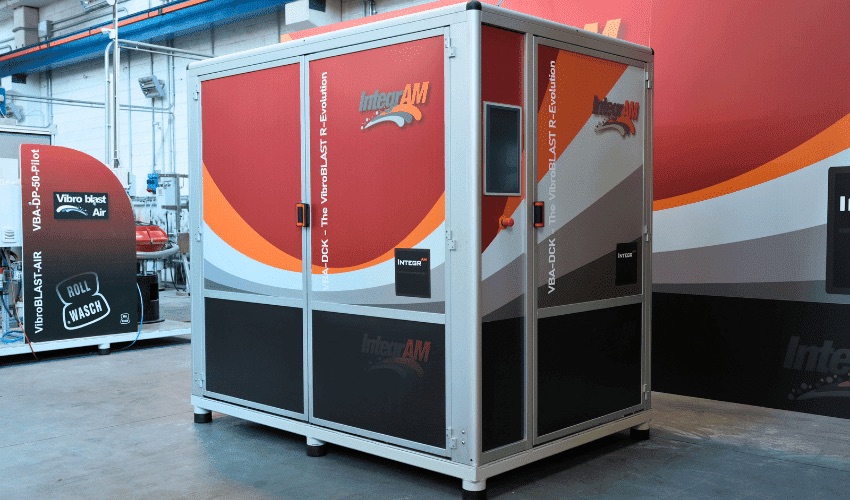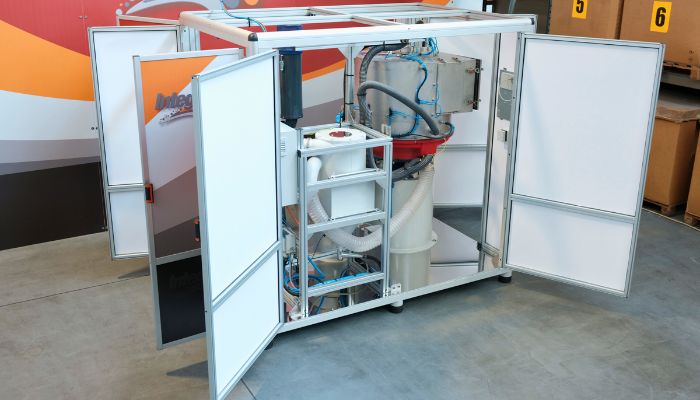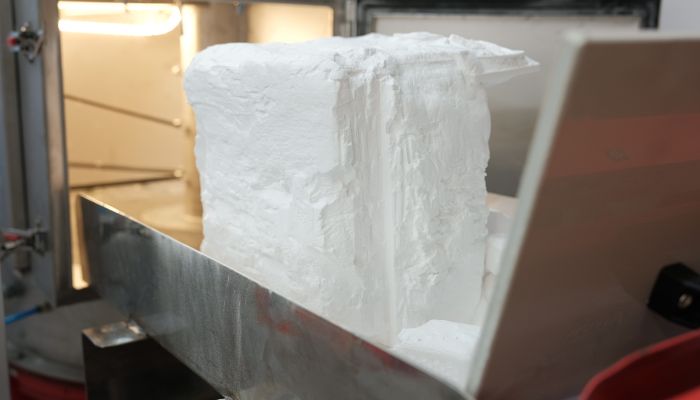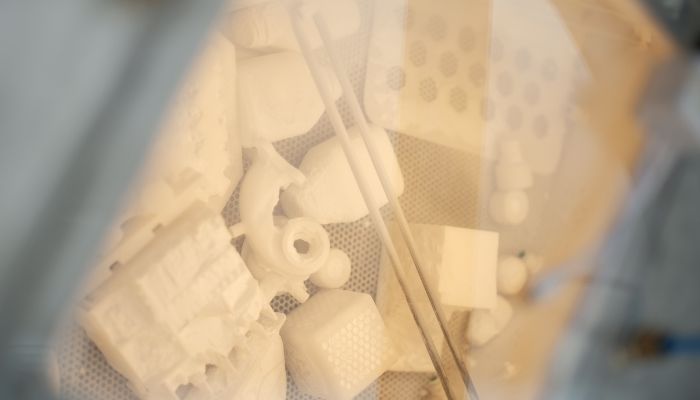Spengler Automates 3D Printing Post-Processing With Its DCK 01 System

The 3D printing industry is constantly evolving, moving more and more towards mass production and the need to optimize production and post-processing processes. As highlighted in the latest report from PostProcess Technologies, which analyzes post-processing trends in 2022, industry users are showing a growing interest in process automation, and are increasingly focusing on the issue of workplace safety. Post-processing activities are still often performed manually and separately, making them repetitive, time-consuming and unattractive for operators and companies alike, who would like to allocate manpower and talent to higher value-added activities.
Against this backdrop, Spengler, a young company born from founders Stefano Rebecchi and Alessandro Facchini’s more than ten years’ experience in 3D printing, is specializing in post-processing in order to fill certain gaps in this market segment. The company, part of the Franco-Italian IntegrAM group, now offers a wide range of services and solutions for additive manufacturing: from the design of customized SLS printing systems to materials development consultancy, automatic post-processing systems for polymer 3D printing and surface finishing for metals. One of the most interesting solutions on offer is the DCK 01 system.

The systems offered by Spengler are produced in Italy in collaboration with IntegrAM Group partners.
This is a fully automated post-processing system for PBF (Powder Bed Fusion) additive technologies, comprising the various individual modules offered by Spengler, which combine perfectly in this all-in-one solution. According to the manufacturer, DCK 01 is the only automated solution capable of offering decaking, cleaning, surface finishing and depowdering. But what are the technical features of this post-processing solution? And how can it meet current industry needs?
Spengler’s DCK 01 All-in-One System for Greater Efficiency and Safety
Looking at the additive manufacturing market, it is clear that those players who have decided to focus on automation and safety have a head start. The increasingly digital, fast and efficient Industry 4.0 demands ever higher production standards, but also smarter management of available talent and greater workplace safety.
The DCK 01 system has been developed to meet these new requirements. How? By offering post-processing automation, operational efficiency and enhanced safety. This orientation stems from direct observation of the difficulties still encountered by companies regularly using PBF technologies. “We started out developing SLS printers, so we know what it means to work with powder every day. This is what prompted us to develop the DCK 01 system with our partners in the Italian IntegrAM Group,” explains Stefano Rebecchi, co-founder of Spengler.

After printing, the powder cake is fed into the machine without coming into contact with the operator.
One of the most commonly used powders in additive manufacturing is polyamide or nylon, in particular PA11 and PA12. Although nylon is not toxic to humans, it can cause skin and eye irritation in operators performing manual decaking or depowdering operations. To date, there are not enough studies on the subject, but recent research, such as that published in the Journal of Safety, Health and Ergonomics “Behavior and Impact of Polyamide Nylon to the Indoor Air Quality during SLS Powder Handling Process,” is beginning to highlight the need for better health protection for technicians.
The DCK 01 system, in this sense, is designed to considerably reduce powder contact time and guarantee greater productivity, thanks to faster processes and the allocation of personnel to other activities.
Features of the DCK 01 System
So far, we’ve talked about the benefits of the DCK 01 system, but which users could benefit from it? The IntegrAM DCK 01 system is designed to handle parts produced by medium-sized PBF printers in high-production environments. It is therefore ideal for users of SLS or Multi Jet Fusion 3D printers, with one or more systems to manage, and who wish to optimize workflow in their production, such as print departments or OEMs.
In technical terms, the DCK 01 has a footprint of 200 x 115 x 210 cm, and is capable of processing a complete cake with a volume of 30/40 liters in less than an hour. This makes it possible to handle several cakes a day, saving up to 3 hours per print compared with manual methods. The system’s flexibility also makes it possible to process larger powder cakes and adapt the product to specific customer requirements.
Its functions include: a “decaking” phase, during which the parts are gently extracted from the powder cake; self-regulated recovery of the powder used; a de-powdering phase and automatic cleaning of the parts by means of a patented vibratory sandblasting process; and an ecological, chemical-free surface finishing process. Added to this are customizable machining programs via a touch-screen interface and PLC, as well as an ATEX extraction solution. An integrated two-cycle mixing and screening system and a powder conveying system can also be added.

Pieces are gently removed from the cake before automatic cleaning begins.
According to the manufacturer, the DCK 01 system, by optimizing time and resources, enables the investment to pay for itself in a short space of time (7 to 15 months, depending on production volume), and increases revenues in the short term. Finally, the solution is positioned on the market with an attractive price tag of less than €100,000.
Spengler also has other interesting news in store: the team is working on the development of a small-format, high-temperature SLS printer for PEEK. The machine is due to be unveiled by the end of the year. We look forward to hearing more! For more information on the DCK 01 post-processing system, click HERE.
What do you think of this automated post-processing solution from Spengler? Let us know in a comment below or on our LinkedIn, Facebook, and Twitter pages! Don’t forget to sign up for our free weekly newsletter here, the latest 3D printing news straight to your inbox! You can also find all our videos on our YouTube channel.
*All Photo Credits: Spengler/IntegrAM






